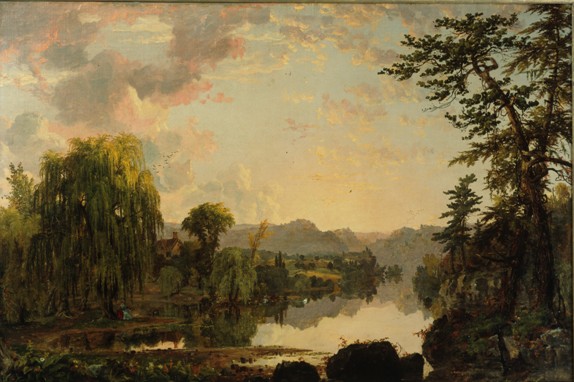Written by Kiani Ned, Curatorial Intern

Jasper F. Cropsey (American, 1823 – 1900), The Nameless River, 1846, oil on canvas, 30 ¾ x 46 ¼ in., Museum Purchase, AP.1969.2.1.
Jasper F. Cropsey–born in Rossville, New York, was a 19th century American Hudson River landscape painter. He was a member of the second generation of the Hudson River School that gained fame and renown through the school’s depiction of the rich native landscape of the Hudson River Valley. The artists of the Hudson River School were inspired by the wild, untouched, and grand beauty of the Hudson River Valley and its surrounding areas; the Catskill, Adirondack, and the White Mountains.
The first generation of the Hudson River School was defined by the artists’ desire to capture the grandeur of the wild landscape, while the second generation was shaped by the work of the “Luminists” who were more concerned with depicting atmosphere and light in their landscape paintings.
The Nameless River showcases Cropsey’s dedication to nature’s simplicity and silence. The image depicted is not an actual river, but a scene inspired by the poem “The Nameless River”, by A. M. Ide Jr. The scene is reminiscent of the Impressionist style in that its brushwork is loose and much attention is paid to atmosphere and color, but it strays in its composition and attention to form. The scene painted by Cropsey is appropriately romantic as it demonstrates a popular 19th century theme of the coexistence between man and nature–the presence of Cropsey’s fiance Marie Cooley sitting under the willow tree does not disturb the peaceful scene of the river.


